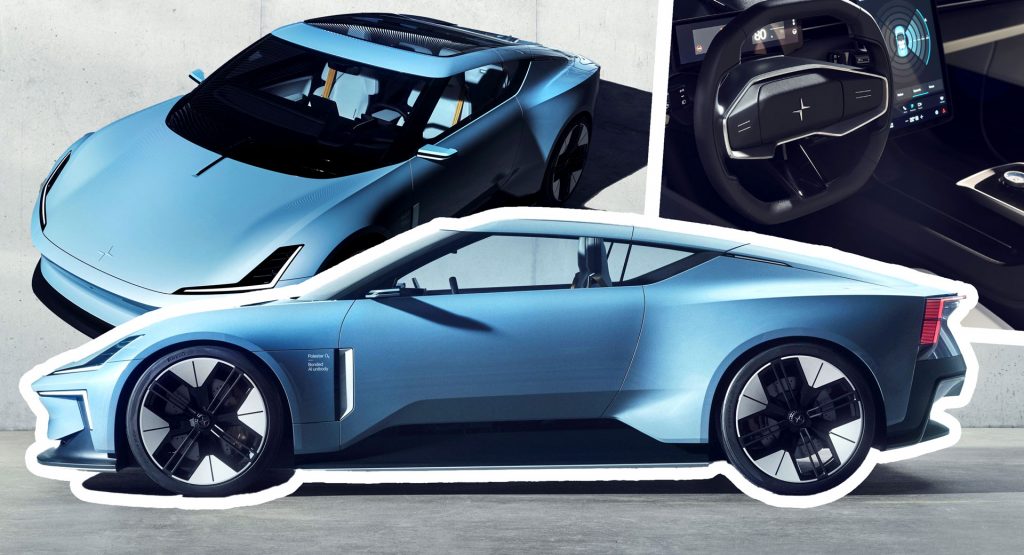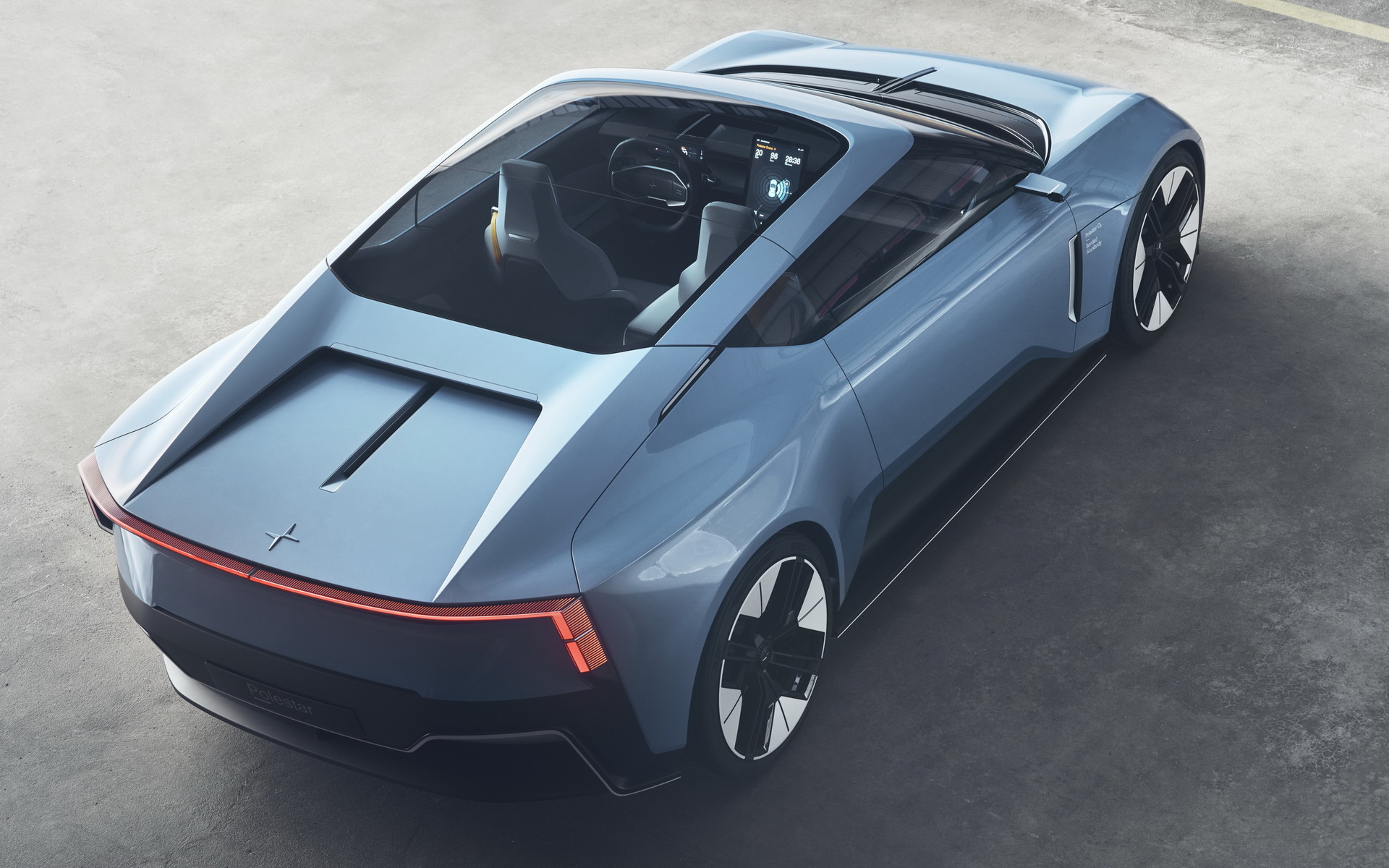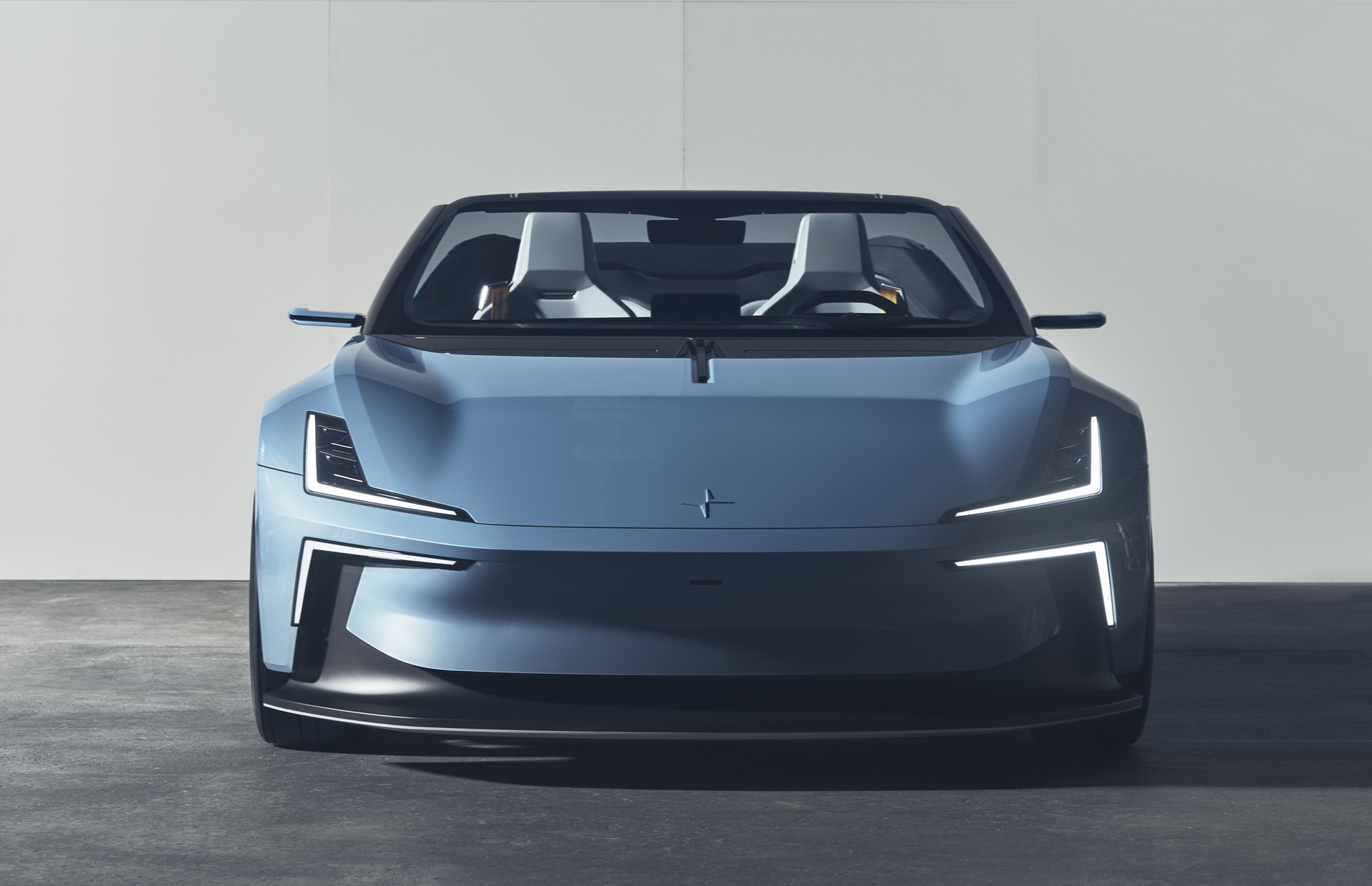Polestar has taken another giant leap away from its Volvo origins with a stunning sports car GT version of its Porsche Taycan-rivalling Precept concept.
Called the O2, the latest machine is a sexy two-door EV with 2+2 seating and a retractable hardtop. But while Polestar has already confirmed the four-door Precept for production as the 2024 Polestar 5, the O2 (which is pronounced like the oxygen molecule) is unfortunately just a concept, or at least that’s what the company claims.
Related: Polestar Previews Precept EV’s Production Version On Video, Will Be Called The Polestar 5
The O2 is exactly the kind of car Polestar needs to make a clear distinction between itself and sister brand Volvo, and convince the world that its claims to be a an electric performance car brand are serious. And even if Polestar doesn’t put the convertible into production, we already know its design language will shape how the brand’s future cars will look.
Much of that design language we’ve already seen on the Precept. The O2 displays the same face with twin hockey-stick lighting elements on either side of its tapering hood, but this time there’s an aggressive front splitter slung below the hood’s leading edge. Large wheels with a cross motif fill the swollen arches, which are linked by a black sill that cuts deep into the side bodywork, just as on the Precept, while the angular rear end also bears a strong similarity.
But the O2, which rides on a Precept/5 platform with a wheelbase shortened by 12.1 inches (307 mm) to 109.9 inches (2792 mm), swaps four doors for two, and features a dramatic glass-topped roof that can be retracted below the rear deck. With the rood stowed the rear styling is dominated by the kind of flying buttresses you get on cars like the Ferrari F8 Spider. They look great from the rear-three-quarter angle, but make the profile view look a little odd. This is one of those rare convertibles that looks much better with the top up, not down.
Inside, you get a 15-inch portrait touchscreen on the console, plus a second small digital instrument cluster above the steering column. The look is very minimalist, but still luxurious. Think Tesla, if it licked its quality gremlins. But even Tesla doesn’t have a drone that slides out from behind the rear seats and can be launched when the car is moving.
Polestar says the flying craft can follow the car at speeds of up to 56 mph (90 km/h) and drivers can edit and share the videos footage to records form the O2’s central display. As for how fast the car itself can travel, Polestar isn’t saying. The company hasn’t revealed details about the powertrain.
Would you like to see Polestar put the O2 into production?


























